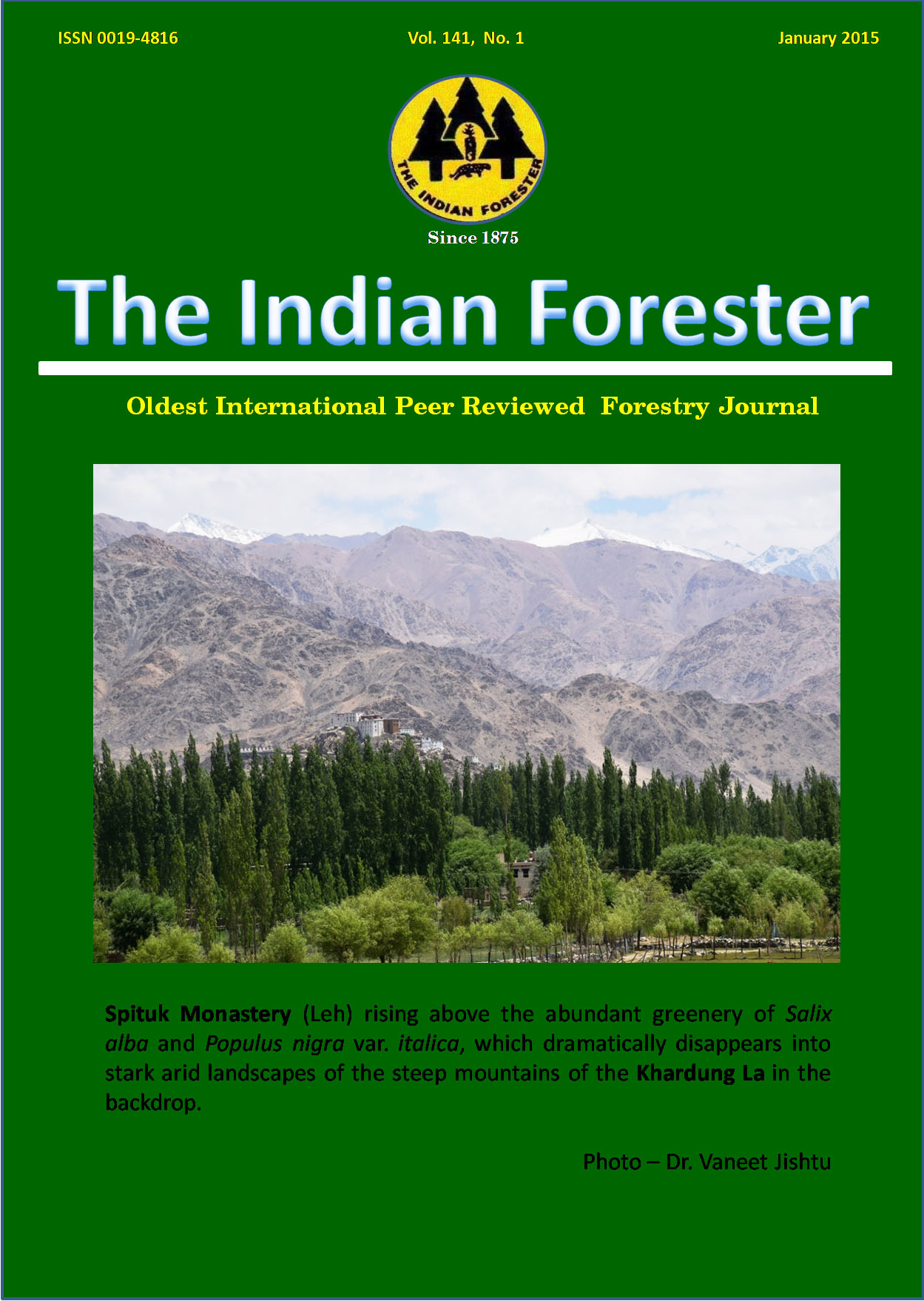Seasonal Diversity Status of Plant Growth Promoting Rhizobacteria (PGPR) in Rhizosphere of Fast Growing Native Tree Species, Melia dubia in Tamil Nadu
DOI:
https://doi.org/10.36808/if/2015/v141i1/56861Keywords:
Diversity, Plant Growth, Melia Dubia, Tamil Nadu.Abstract
A study was conducted to determine the seasonal diversity status of different beneficial bacteria viz., Plant growth promoting rhizobacteria (PGPR) from the rhizosphere of M. dubia plantations of Tamil Nadu. Total of 28 PGPR isolates (Azotobacter - 8 isolates; Azospirillum - 9 isolates; PSB - 11 isolates) were recorded from various samples collected from different study locations and identified as members of two species each of Azotobacter and Azospirillum and five species of PSB. Among PSB, four Bacillus species and one Stenotrophomonas species were observed. Clear seasonal pattern was seem on the occurrence and distribution of population density of PGPRs. Population density of Azotobacter was found maximum during April-June (2011), whereas population density of Azospirillum and PSB was found maximum during Oct-Dec (2011). The climatic and edaphic factors influenced the population density of PGPR colonization, but the intensity of their influence varies with the study sites. Soil in all the sites was found acidic, low in available nitrogen, moderate in available phosphorus and high in available potassium. Studies on growth hormone (IAA) production and phosphate solubilization by PGPR isolates further revealed the potentiality of these isolates to be optimized and produced on a large scale as bio-fertilizers for growth enhancement of important native tree species.References
Bashan Y. 1(998). Inoculants of plant growth-promoting bacteria for use in agriculture. Biotechnol. Adv., 16:729-770.
Bent E., Tuzun S., Chanway C.P. and Enebak S. (2001). Alterations in plant growth and in root hormone levels of lodge pole pines inoculated with rhizobacteria. Canadian Journal Microbiology, 47: 793-800.
Dekker L.W. and Ritsema C.J. (1996). Variation in water content and wetting patterns in Dutch water repellent peaty clay and clayey peat soils. Catena, 28: 89-105.
Farah A., Iqbal A. and Khan M.S. (2008). Screening of free-living rhizospheric bacteria for their multiple plant growth promoting activities. Microbiological Research, 163: 173-181.
Guang-Can TAO., Shu-Jun TIAN., Miao-Ying CAI. and Guang-Hui XIE. (2008). Phosphate-Solubilizing and Mineralizing Abilities of Bacteria isolated from Soils. Pedosphere. 18(4): 515–523.
Joseph B., Ranjan P.R. and Lawrence R. (2007). Characterization of plant growth promoting rhizobacteria associated with chickpea (Cicer arietinum L.). International Journal of Plant Production, 1(2):141-151.
Kang B.T. and Willson G.F. (1987). The development of alley forming as a promising agro-forestry technology. In: Agroforestry A decade of development.( H. A. Steppler and P. K. R. Nair. eds.) ICRF Nairobi - Kenya. pp: 227-243.
Martin D., Stanley F., Eugene R., Karl-Heinz S. and Erok S. (2006). The Prokaryotes; A hand book on the biology of bacteria, 3rd ed. Vol-I-VII.
Parkinson D.J., Gray R. and Williams S.T. (1971). Methods of studying the ecology of soil micro-organisms. Oxford, Blackwell Scientific publications. pp. 116.
Ritsema C.J. and Dekker L.W. (1994). How water moves in a water repellent sandy soil 2.Dynamics of fingered flow. Water Resour. Res., 30: 2519-2531.
Rodriguez-caceras A. (1982). Improved medium for isolation of Azospirillum sp. AEM 44 (4):990-991.
Sharma K., Dak G., Agrawal A., Bhatnagar M. and Sharma R. (2007). Effect of phosphatesolubilizing bacteria on the germination of Cicer arietinum seeds and seedling growth. Journal of Herbal Medicine and Toxicology, 1(1): 61-63.
Subba Rao N.S. (1993). Biofertilizers in Agriculture and Forestry, 3rd edition. Oxford & IBH publishing Co. Pvt. Ltd, New Delhi. pp. 69-131.
Yang J., Joseph W.K. and Choong-Min R. (2009). Rhizosphere bacteria help plants tolerate abiotic stress. Trends Plant Sci., 14(1): 1-4.
Downloads
Downloads
Published
How to Cite
Issue
Section
License
Unless otherwise stated, copyright or similar rights in all materials presented on the site, including graphical images, are owned by Indian Forester.





